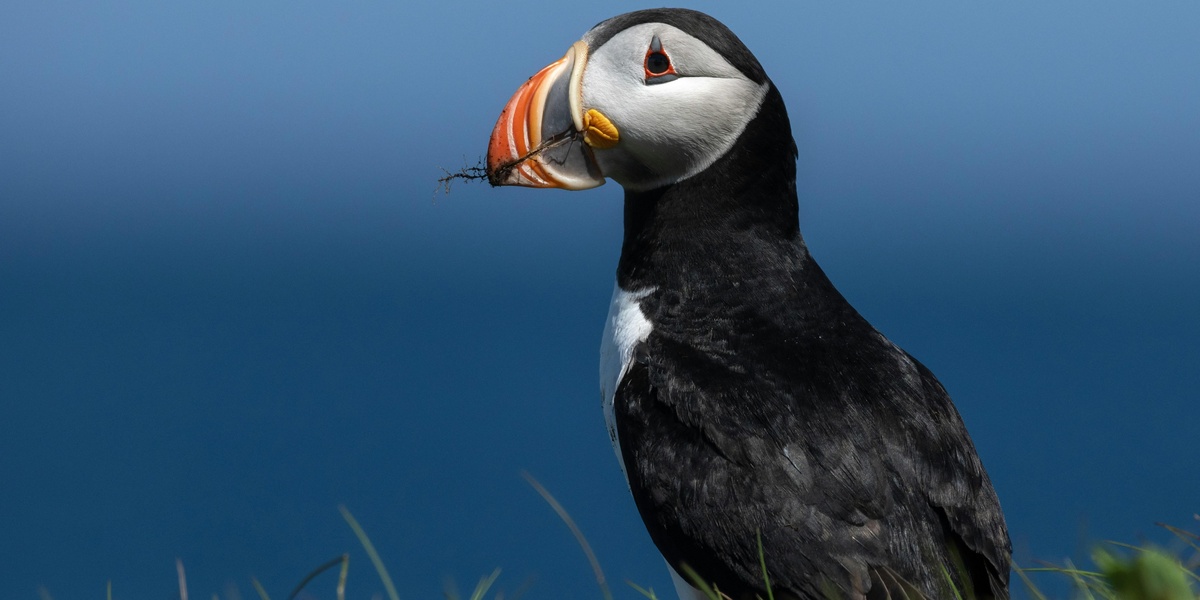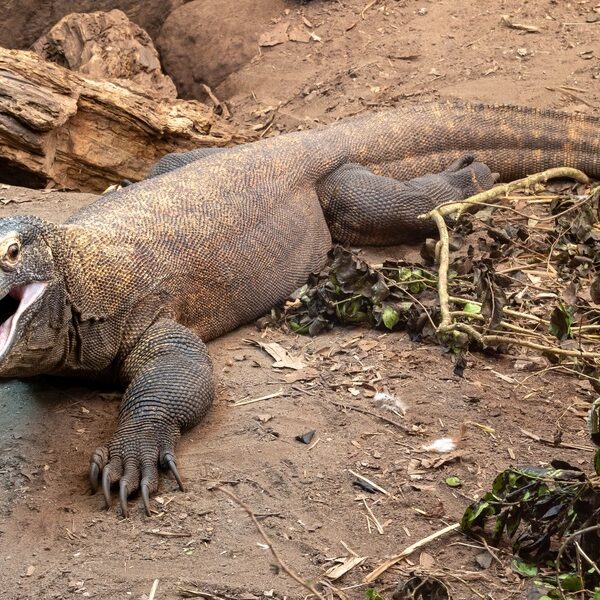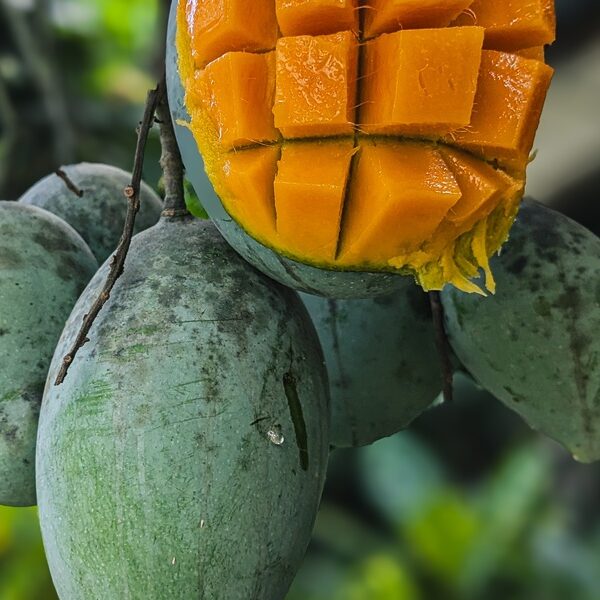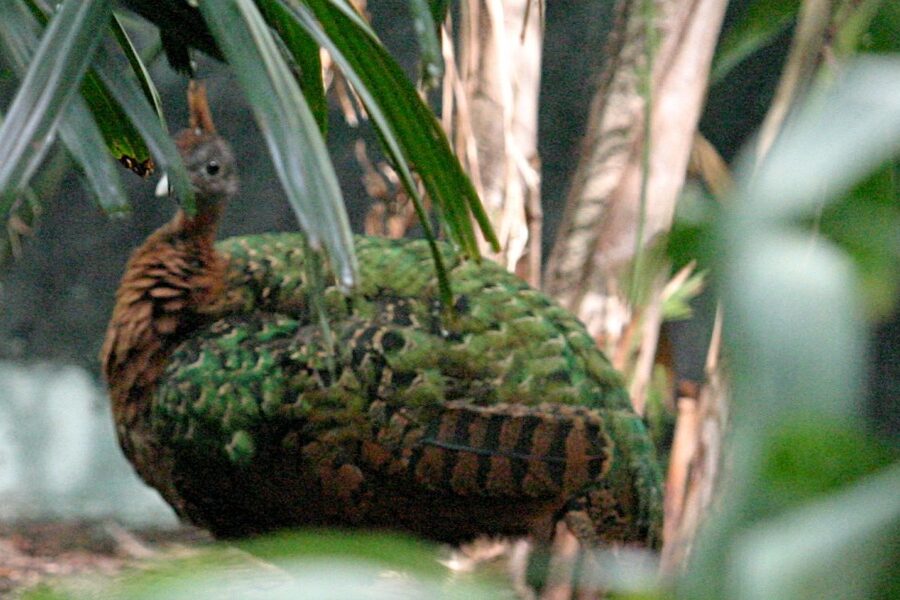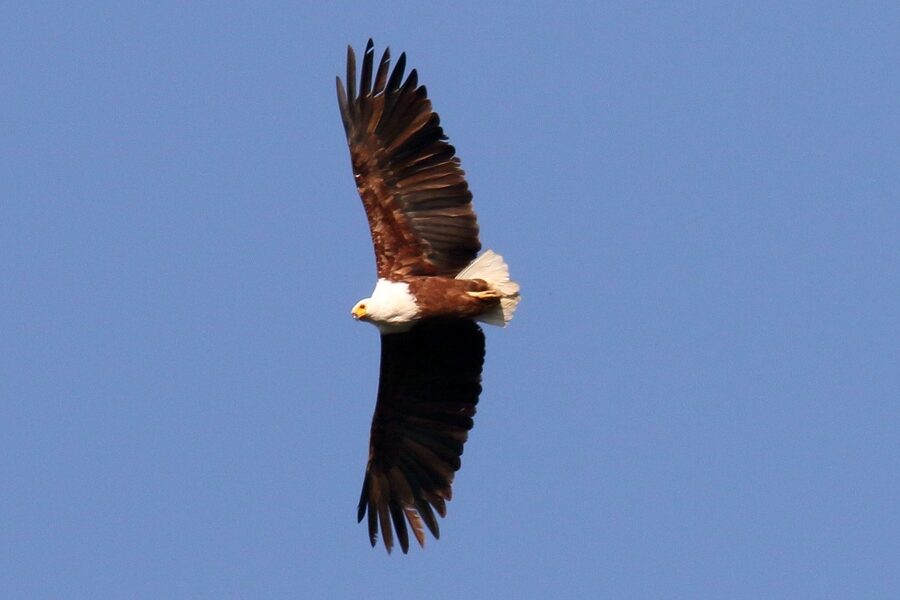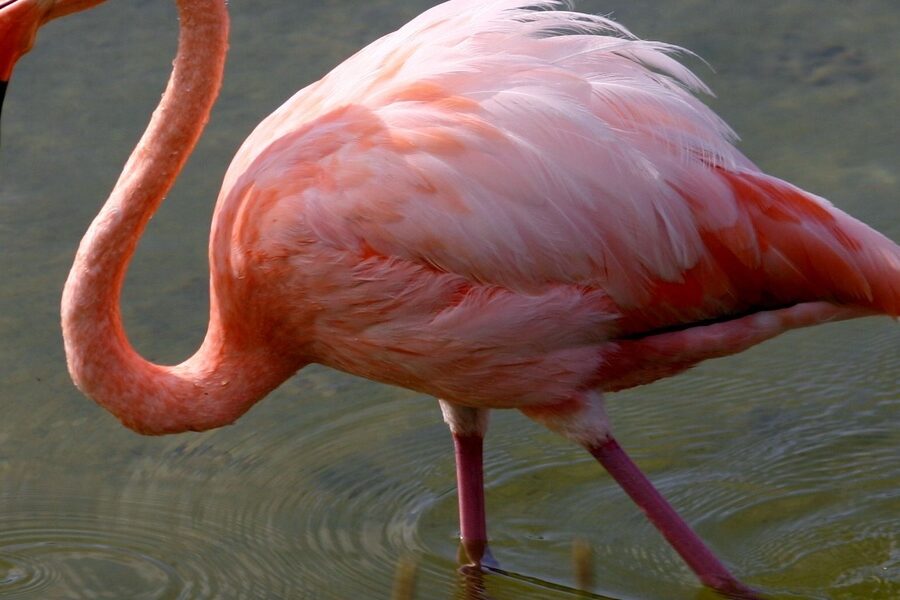Northern Ireland’s mix of rugged coastline, loughs, wetlands and uplands supports a wide range of birdlife. Whether you’re scanning estuaries, walking woodland trails or visiting hides, the variety of habitats makes birding rewarding year‑round.
There are 106 Birds of Northern Ireland, ranging from Avocet to Wren. For each species, the list gives Scientific name,Status,Where found so you can check taxonomy, conservation status and typical locations — you’ll find below.
How was this list compiled?
The list is based on national and local bird records, county reports and established checklists, with statuses reflecting recent assessments; sightings from recorder groups and conservation bodies were used to confirm the current 106 species.
When and where should I go to see many species, including Avocet or Wren?
Coastal estuaries and loughs (for example, Strangford Lough) are prime for Avocet during migration and breeding seasons, while Wren is common year‑round in woodlands and gardens; check tide times and recent local reports to target the best sites and times.
Birds of Northern Ireland
| Name | Scientific name | Status | Where found |
|---|---|---|---|
| Avocet | Recurvirostra avosetta | Scarce visitor and recent breeder | Coastal lagoons, estuaries, especially Strangford Lough and Lough Foyle. |
| Barn Owl | Tyto alba | Resident | Farmland, grassland, and woodland edges across NI. |
| Bar-tailed Godwit | Limosa lapponica | Winter visitor / Passage | Estuaries and muddy coastlines, notably Strangford Lough. |
| Blackbird | Turdus merula | Resident | Gardens, parks, woodland, and farmland across NI. |
| Blackcap | Sylvia atricapilla | Summer visitor and scarce winter resident | Woodlands, parks, and large gardens with scrub. |
| Black Guillemot | Cepphus grylle | Resident seabird | Coastal waters, harbours, and cliffs, especially Co. Antrim and Co. Down. |
| Black-headed Gull | Chroicocephalus ridibundus | Resident, numbers boosted in winter | Coasts, inland lakes, farmland, and urban parks. |
| Blue Tit | Cyanistes caeruleus | Resident | Gardens, woodlands, and parks everywhere in NI. |
| Brambling | Fringilla montifringilla | Winter visitor | Beech woodlands and farmland, often with Chaffinches. |
| Brent Goose | Branta bernicla | Winter visitor | Coastal estuaries, especially Strangford Lough and Lough Foyle. |
| Bullfinch | Pyrrhula pyrrhula | Resident | Woodlands, orchards, and large, well-vegetated gardens. |
| Buzzard | Buteo buteo | Resident | Widespread over farmland, woodland, and moorland. |
| Chaffinch | Fringilla coelebs | Resident | Ubiquitous in gardens, woodlands, and farmland. |
| Chiffchaff | Phylloscopus collybita | Summer visitor, few overwinter | Woodlands and scrubby areas across Northern Ireland. |
| Coal Tit | Periparus ater | Resident | Gardens and woodlands, especially favouring conifers. |
| Collared Dove | Streptopelia decaocto | Resident | Gardens, parks, towns, and farmland. |
| Common Sandpiper | Actitis hypoleucos | Summer visitor | Rivers, lakes, and reservoirs with stony shores. |
| Coot | Fulica atra | Resident | Loughs, ponds, and slow-moving rivers with vegetation. |
| Cormorant | Phalacrocorax carbo | Resident | Coasts and large inland waters like Lough Neagh. |
| Corncrake | Crex crex | Very rare summer visitor | Hay meadows and dense vegetation, mainly Rathlin Island. |
| Crossbill | Loxia curvirostra | Resident | Conifer forests, such as Gosford and Tollymore. |
| Curlew | Numenius arquata | Resident, numbers boosted in winter | Uplands in summer; coastal mudflats in winter. |
| Dipper | Cinclus cinclus | Resident | Fast-flowing, clean rivers and streams. |
| Dunnock | Prunella modularis | Resident | Gardens, parks, and woodland scrub across NI. |
| Eider | Somateria mollissima | Resident seabird | Coasts, especially in the north and east; Strangford Lough. |
| Fieldfare | Turdus pilaris | Winter visitor | Farmland, fields, and hedgerows, often in large flocks. |
| Fulmar | Fulmarus glacialis | Resident seabird | Coastal cliffs for breeding, widespread at sea. |
| Gannet | Morus bassanus | Seabird, summer visitor | Breeds on offshore stacks, seen widely around coasts. |
| Goldcrest | Regulus regulus | Resident | Widespread in woodlands, parks, and gardens, favouring conifers. |
| Goldfinch | Carduelis carduelis | Resident | Gardens, parks, and weedy ground. |
| Goosander | Mergus merganser | Resident and winter visitor | Rivers and lakes, more widespread in winter. |
| Great Black-backed Gull | Larus marinus | Resident | Coasts and, increasingly, inland landfill sites. |
| Great Crested Grebe | Podiceps cristatus | Resident | Lowland loughs and reservoirs with vegetated margins. |
| Great Northern Diver | Gavia immer | Winter visitor | Coastal waters, sea loughs, and some large inland loughs. |
| Great Spotted Woodpecker | Dendrocopos major | Resident | Woodlands, parks and increasingly gardens. |
| Great Tit | Parus major | Resident | Gardens, woodlands, and parks everywhere in NI. |
| Greenfinch | Chloris chloris | Resident | Gardens, parks and woodland edges. |
| Greenshank | Tringa nebularia | Passage migrant, some overwinter | Estuaries and coastal lagoons like Strangford Lough. |
| Grey Heron | Ardea cinerea | Resident | Wetlands, riverbanks, loughs, and even garden ponds. |
| Grey Wagtail | Motacilla cinerea | Resident | Fast-flowing rivers and streams. |
| Guillemot | Uria aalge | Seabird, summer visitor | Breeds in huge colonies on sea cliffs like Rathlin Island. |
| Hen Harrier | Circus cyaneus | Resident and winter visitor | Upland moorland and bog for breeding; lowlands in winter. |
| Herring Gull | Larus argentatus | Resident | Coasts and inland towns and rubbish tips. |
| Hooded Crow | Corvus cornix | Resident | Widespread in most habitats, less common in urban centres. |
| House Martin | Delichon urbicum | Summer visitor | Towns, villages, and farmland, nests on buildings. |
| House Sparrow | Passer domesticus | Resident | Closely associated with humans in cities, towns, and farms. |
| Jackdaw | Corvus monedula | Resident | Farmland, towns, and coastal cliffs. |
| Jay | Garrulus glandarius | Resident | Broadleaf and mixed woodlands, large parks. |
| Kestrel | Falco tinnunculus | Resident | Open country, farmland, and even along motorways. |
| Kingfisher | Alcedo atthis | Resident | Clean, slow-flowing rivers, canals, and lakes. |
| Kittiwake | Rissa tridactyla | Seabird, summer visitor | Breeds on sea cliffs; found far out at sea in winter. |
| Lapwing | Vanellus vanellus | Resident, numbers boosted in winter | Farmland and wetlands. |
| Lesser Black-backed Gull | Larus fuscus | Resident and summer visitor | Coasts and inland areas. |
| Linnet | Linaria cannabina | Resident | Farmland with hedgerows, gorse scrub, and coastal areas. |
| Little Egret | Egretta garzetta | Resident | Coastal estuaries, lagoons and inland wetlands. |
| Little Grebe | Tachybaptus ruficollis | Resident | Ponds, lakes, and slow rivers with plenty of vegetation. |
| Long-eared Owl | Asio otus | Resident | Conifer forests and dense scrub. |
| Long-tailed Tit | Aegithalos caudatus | Resident | Woodlands, parks, and gardens. |
| Magpie | Pica pica | Resident | Extremely common in all habitats except deep forest. |
| Mallard | Anas platyrhynchos | Resident | Almost any body of water, from park ponds to coastal bays. |
| Manx Shearwater | Puffinus puffinus | Seabird, summer visitor | Seen on seawatching trips; breeds in burrows on islands. |
| Meadow Pipit | Anthus pratensis | Resident | Moorland, grassland, and coastal marshes. |
| Merlin | Falco columbarius | Resident and winter visitor | Upland moors in summer; coasts and farmland in winter. |
| Mistle Thrush | Turdus viscivorus | Resident | Parks, large gardens, and woodland. |
| Moorhen | Gallinula chloropus | Resident | Ponds, lakes, and slow rivers with bankside vegetation. |
| Mute Swan | Cygnus olor | Resident | Loughs, rivers, and coastal bays. |
| Oystercatcher | Haematopus ostralegus | Resident | Widespread on coasts; also breeds inland by loughs. |
| Peregrine Falcon | Falco peregrinus | Resident | Coastal cliffs, quarries, and increasingly on tall city buildings. |
| Pied Wagtail | Motacilla alba yarrellii | Resident | Widespread near humans; in car parks, towns, and on farmland. |
| Puffin | Fratercula arctica | Seabird, summer visitor | Breeds on grassy cliff tops, notably on Rathlin Island. |
| Raven | Corvus corax | Resident | Uplands and coastal cliffs. |
| Razorbill | Alca torda | Seabird, summer visitor | Breeds on cliff ledges alongside Guillemots. |
| Red-breasted Merganser | Mergus serrator | Resident and winter visitor | Mainly coastal waters, especially sea loughs. |
| Red Grouse | Lagopus lagopus scotica | Resident | Upland heather moorland, such as the Antrim Hills. |
| Red Kite | Milvus milvus | Resident (reintroduced) | Mainly Co. Down around Castlewellan and Tollymore. |
| Redshank | Tringa totanus | Resident and winter visitor | Coastal mudflats and inland wet grasslands. |
| Red-throated Diver | Gavia stellata | Winter visitor; rare breeder | Coastal waters in winter; remote upland loughs for breeding. |
| Redwing | Turdus iliacus | Winter visitor | Farmland, parks, and berry-laden hedgerows. |
| Reed Bunting | Emberiza schoeniclus | Resident | Reedbeds, wetlands, and damp scrubby areas. |
| Ringed Plover | Charadrius hiaticula | Resident and passage migrant | Sandy and shingle beaches and coastal estuaries. |
| Robin | Erithacus rubecula | Resident | Ubiquitous in gardens, parks, and woodlands. |
| Rook | Corvus frugilegus | Resident | Farmland with mature trees, forms large colonies (rookeries). |
| Sanderling | Calidris alba | Passage and winter visitor | Sandy beaches along the coast. |
| Sand Martin | Riparia riparia | Summer visitor | Nests colonially in sandy riverbanks, quarries and cliffs. |
| Shag | Gulosus aristotelis | Resident seabird | Rocky coasts and sea cliffs. |
| Shelduck | Tadorna tadorna | Resident | Coastal mudflats and estuaries. |
| Siskin | Spinus spinus | Resident | Conifer woodlands; visits garden feeders in winter. |
| Skylark | Alauda arvensis | Resident | Open farmland, moorland, and coastal dunes. |
| Snipe | Gallinago gallinago | Resident and winter visitor | Bogs, marshes, and wet fields. |
| Song Thrush | Turdus philomelos | Resident | Gardens, parks, and woodland across NI. |
| Sparrowhawk | Accipiter nisus | Resident | Woodlands, but now common in parks and gardens. |
| Starling | Sturnus vulgaris | Resident, numbers swell hugely in winter | Widespread in all habitats, from city centres to farmland. |
| Stock Dove | Columba oenas | Resident | Farmland with mature trees, parkland, and coastal cliffs. |
| Stonechat | Saxicola rubicola | Resident | Gorse scrub, heathland, and coastal areas. |
| Swallow | Hirundo rustica | Summer visitor | Farmland, villages, and open country near water. |
| Swift | Apus apus | Summer visitor | Towns and cities, almost exclusively airborne. |
| Teal | Anas crecca | Resident and winter visitor | Wetlands, sheltered estuaries, and flooded fields. |
| Treecreeper | Certhia familiaris | Resident | Woodlands and parks with mature trees. |
| Tufted Duck | Aythya fuligula | Resident and winter visitor | Loughs, reservoirs, and park lakes. |
| Turnstone | Arenaria interpres | Passage and winter visitor | Rocky shorelines and seaweed-covered beaches. |
| Wheatear | Oenanthe oenanthe | Summer visitor | Uplands, coastal areas, and rocky ground. |
| Whooper Swan | Cygnus cygnus | Winter visitor | Wetlands and flooded fields, especially around Lough Neagh. |
| Wigeon | Mareca penelope | Winter visitor | Coastal estuaries and inland wetlands in large numbers. |
| Willow Warbler | Phylloscopus trochilus | Summer visitor | Woodlands, scrub, and large gardens. |
| Woodpigeon | Columba palumbus | Resident | Ubiquitous in all habitats. |
| Wren | Troglodytes troglodytes | Resident | Abundant in almost any habitat with dense cover. |
Images and Descriptions
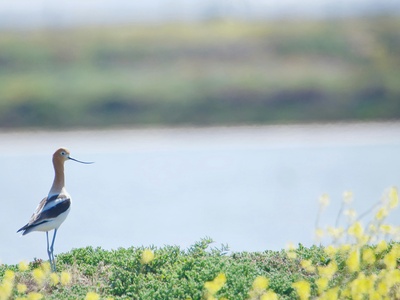
Avocet
A strikingly elegant black and white wader with a unique, long, upcurved black bill. Known for its distinctive feeding action, sweeping its bill from side to side through shallow water. Its long blue-grey legs are also a key feature.
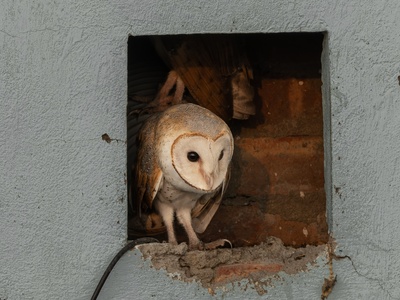
Barn Owl
A ghostly, medium-sized owl with a heart-shaped white face, mottled golden-buff back, and pure white underparts. Hunts silently at dawn and dusk over open country for small mammals. Its eerie, screeching call is unmistakable but rarely heard.
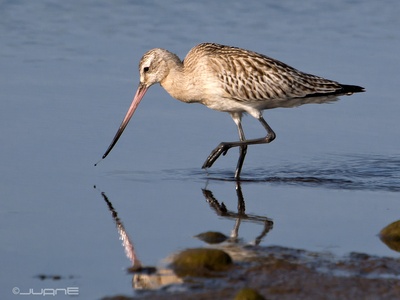
Bar-tailed Godwit
A large, long-billed wader with long legs and a subtly upcurved bill. In winter, its plumage is a plain grey-brown, but it can be distinguished from the Black-tailed Godwit by its barred tail and shorter legs.
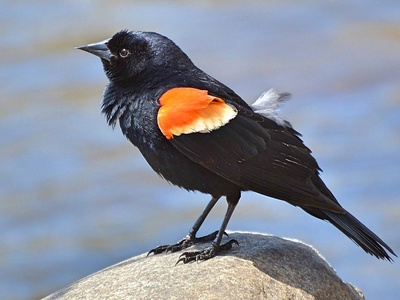
Blackbird
One of the most familiar garden birds. The male is glossy black with a bright orange-yellow bill and eye-ring. Females are dark brown with a duller bill. Renowned for its beautiful, melodic, and fluting song, often delivered from a high perch.
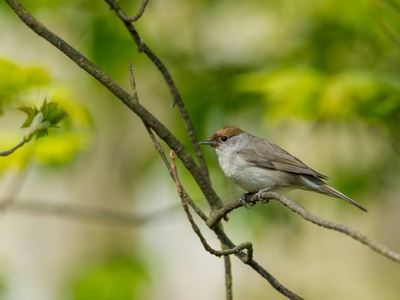
Blackcap
A small, plain grey warbler. The male is easily identified by his neat black cap, while the female has a chestnut-brown cap. Often heard before it is seen, delivering a rich, fast, and musical warbling song from dense cover.
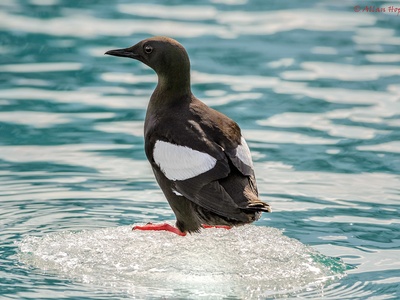
Black Guillemot
A small, pigeon-sized auk. In summer, it is entirely black except for large, obvious white wing patches and bright red legs and feet. It is much paler and more mottled in winter. Often seen bobbing on the water close to shore.
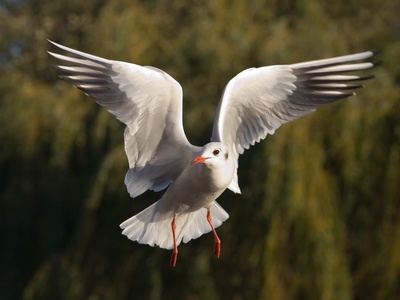
Black-headed Gull
Our most common small gull. In summer, it has a chocolate-brown head (not black), a pale grey body, and red legs. In winter, it loses the dark head, retaining just a dark smudge behind the eye. A noisy and sociable species.
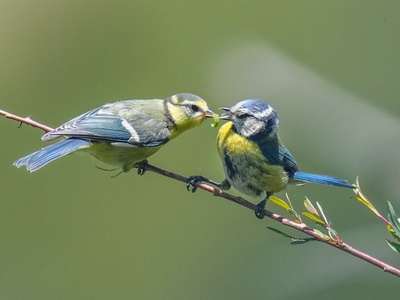
Blue Tit
A tiny, acrobatic bird with a striking combination of blue, yellow, white, and green plumage. Easily recognised by its blue cap, white cheeks, and yellow belly. A common and welcome visitor to garden bird feeders, especially for peanuts and fat balls.
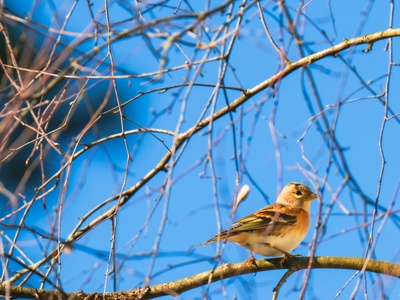
Brambling
A finch similar in size to a Chaffinch. The male is striking with a black head, orange breast, and white rump conspicuous in flight. Females are browner and more subdued. They visit in winter, sometimes in large flocks, to feed on beech mast.
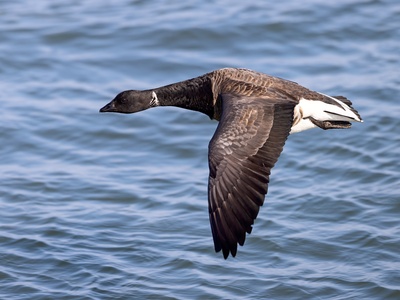
Brent Goose
A small, dark goose with a black head and neck, and a small white patch on the side of its neck. The pale-bellied subspecies is the one that winters in NI in huge numbers, feeding on eelgrass in tidal mudflats.
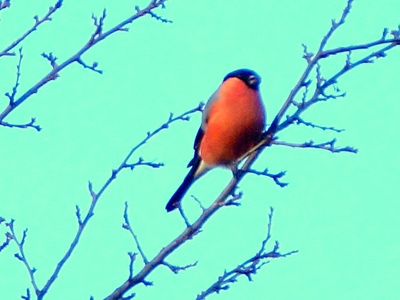
Bullfinch
A stocky, shy finch. The male is unmistakable with a bright pinkish-red breast, black cap, and grey back. The female is a much duller pinkish-brown. Both have a prominent white rump that is obvious in their bouncing flight.
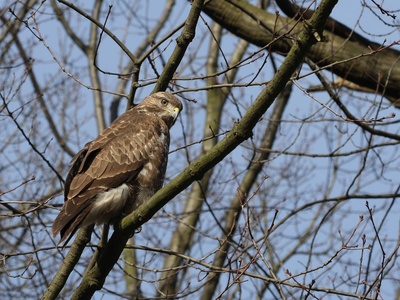
Buzzard
A medium-to-large raptor, now Northern Ireland’s most common bird of prey. Usually seen soaring high on broad wings, with a wingspan over a metre. Its plumage is variable but typically mottled brown. Its call is a cat-like “mee-ow”.
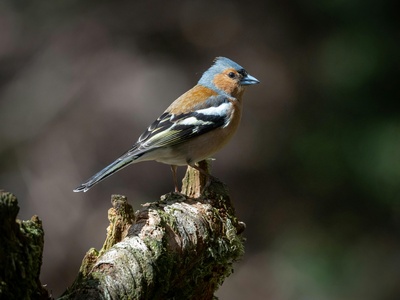
Chaffinch
One of our most common and widespread birds. The male is colourful with a pinkish breast, blue-grey head, and brown back. Both sexes show prominent white wing bars in flight. Has a loud, rattling song that ends with a flourish.
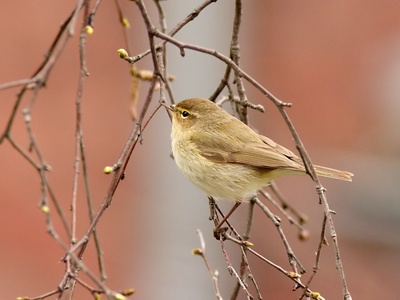
Chiffchaff
A small, olive-brown warbler that is often heard before it’s seen. It is best identified by its simple, repetitive, two-note song from which it gets its name: “chiff-chaff, chiff-chaff”. Constantly flicks its tail.
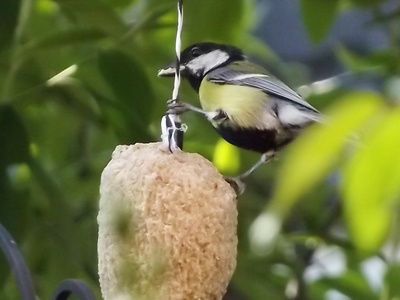
Coal Tit
A small tit, less colourful than a Blue Tit. It is greyish-brown above and buff below, with a distinctive black head featuring large white cheek patches and a white patch on the back of its neck. A frequent garden feeder visitor.
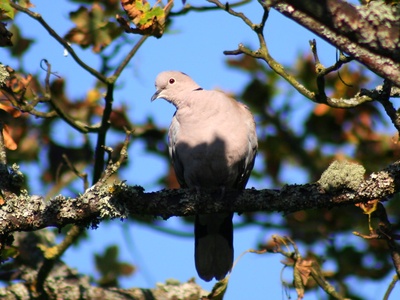
Collared Dove
A pale, sandy-grey dove, smaller and slimmer than a Woodpigeon. Its key feature is the narrow black half-collar on the back of its neck. Its monotonous and repetitive three-note “coo-COO-cook” call is a common sound.
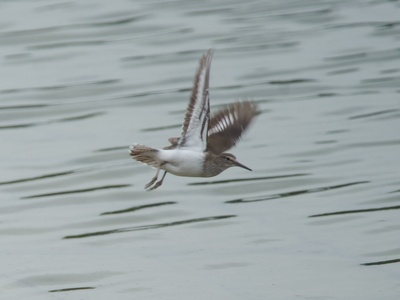
Common Sandpiper
A small wader recognised by its habit of constantly bobbing its tail and rear body. It has brown upperparts and clean white underparts that extend in a wedge up the side of the breast. Has a distinctive three-note piping call in flight.
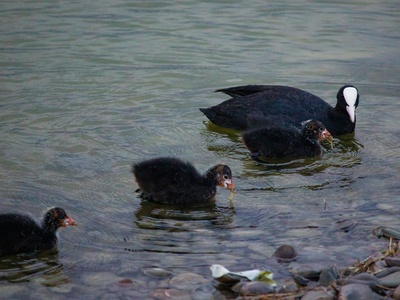
Coot
A black, duck-like waterbird with a distinctive white bill and frontal shield on its forehead. It has large, lobed toes rather than webbed feet. Often seen squabbling noisily, chasing other birds with much splashing and flapping.

Cormorant
A large, dark waterbird often seen standing on posts or rocks with its wings held out to dry. It has a long, powerful, hooked bill and is an expert diver, pursuing fish underwater. Appears almost reptilian and prehistoric.
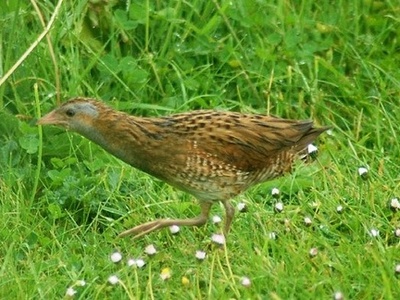
Corncrake
A secretive, quail-sized bird of farmland, now critically endangered in Ireland. It is rarely seen, but the male’s loud, rasping, mechanical “crex-crex” call, often heard at night, is unmistakable. A major conservation focus.
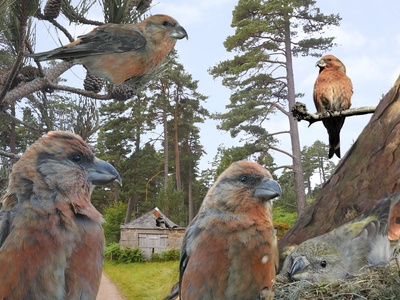
Crossbill
A stocky, starling-sized finch with a remarkable crossed bill, uniquely adapted for extracting seeds from conifer cones. Males are a dull brick-red, while females are olive-green. They are often seen in noisy flocks high in pine trees.
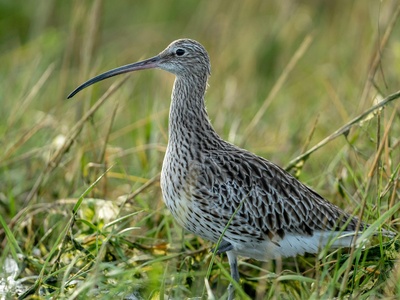
Curlew
A very large, mottled brown wader, instantly recognisable by its incredibly long, downcurved bill. Its evocative, bubbling call is a famous sound of wild places but is sadly becoming rarer as breeding populations decline.
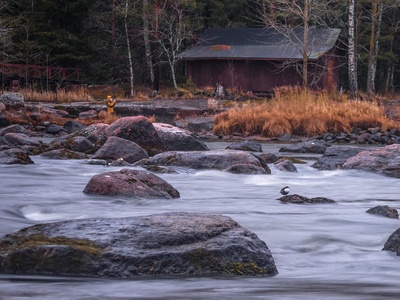
Dipper
A unique, stocky bird the size of a starling. It has dark brown plumage with a striking white throat and breast. It is famous for bobbing up and down on rocks and for its ability to walk underwater on the riverbed to find insects.
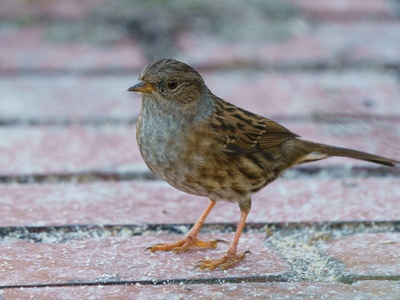
Dunnock
A small, quiet, and unobtrusive bird often mistaken for a sparrow. However, it is slimmer with a fine, thin bill and a greyish head and breast. It shuffles along the ground, often near cover, with a nervous, flicking motion.
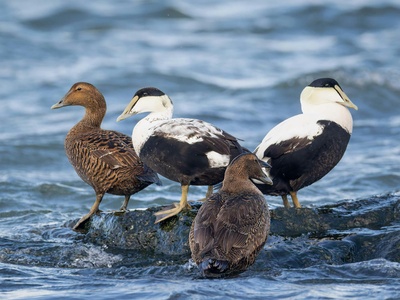
Eider
A large, heavy sea duck. The male is unmistakable in his black and white breeding plumage with a pale green patch on his nape. Females are a uniform mottled brown. They gather in flocks, or “rafts”, on the sea.
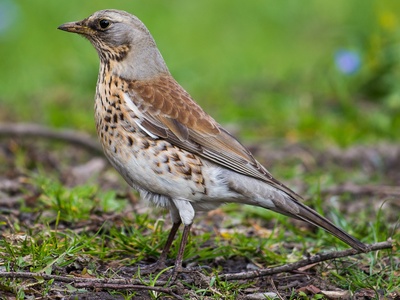
Fieldfare
A large, handsome thrush visiting from Scandinavia. It has a grey head and rump, a brown back, and a heavily speckled breast. Sociable and noisy, they have a harsh, chattering “chack-chack-chack” call. Often seen feeding on berries.
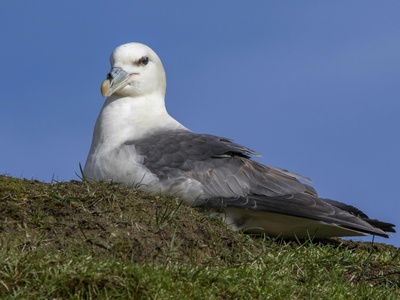
Fulmar
A gull-like seabird with stiff-winged, gliding flight. It has a grey and white body, but a thick neck and a stout, tube-nosed bill distinguish it from gulls. Nests on cliffs and can spit a foul-smelling oil at intruders.
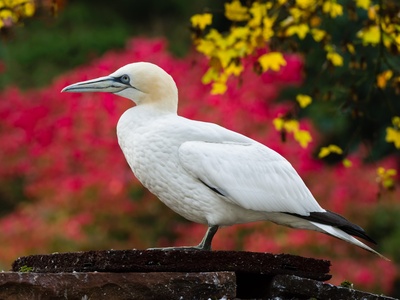
Gannet
Our largest seabird, with a huge two-metre wingspan. Adults are brilliant white with black wingtips and a yellowish head. They are famous for their spectacular high-speed plunge dives into the sea to catch fish.
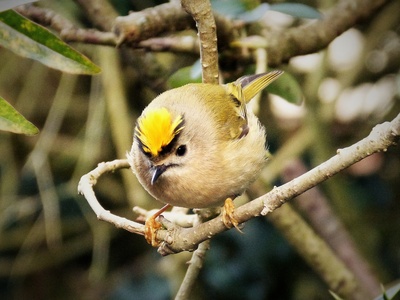
Goldcrest
The UK and Ireland’s smallest bird. A tiny, round, olive-green bird with a brightly coloured crest – orange in the male, yellow in the female. Has a very high-pitched, thin call. Always active, flitting through branches searching for tiny insects.
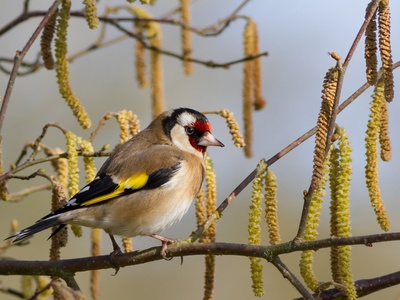
Goldfinch
A beautiful and colourful finch with a bright red face, black and white head, and striking yellow wing bars. Often seen in twittering flocks, known as “charms,” feeding on thistle heads or visiting garden niger seed feeders.
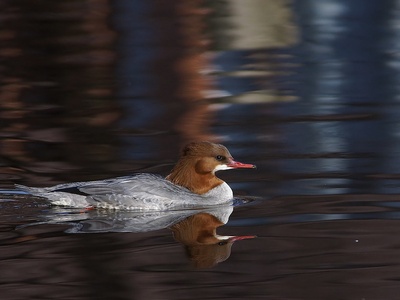
Goosander
A large, sleek diving duck with a long, thin, serrated bill for catching fish. The male has a dark green head, white body, and black back. The female is grey with a shaggy, reddish-brown crest.
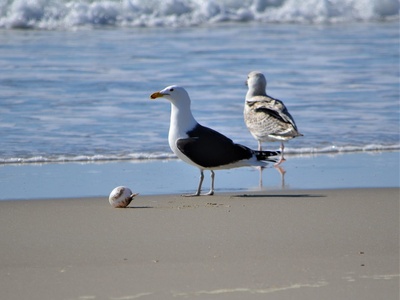
Great Black-backed Gull
The world’s largest gull, a powerful and imposing bird. Adults have a jet-black back and wings, a white body, and a massive yellow bill with a red spot. It is a formidable predator and scavenger, dominating other seabirds.
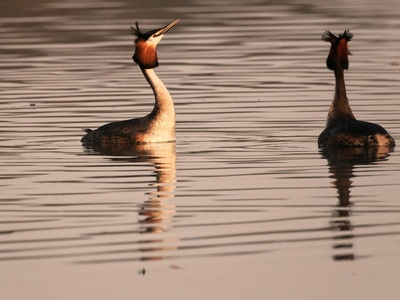
Great Crested Grebe
An elegant waterbird, famous for its elaborate courtship “weed dance” in spring. In breeding plumage, it has spectacular orange and black head plumes. Sits low in the water and is an expert diver, often resurfacing surprisingly far away.
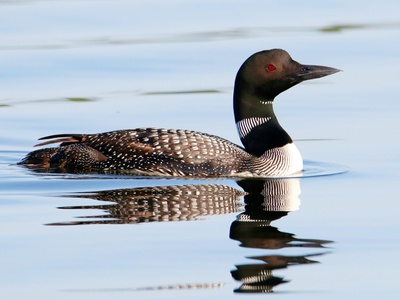
Great Northern Diver
A large, powerful diving bird. In winter, it has a dark grey-black back and clean white front, with a thick, dagger-like bill. A superb swimmer and diver, it requires a long ‘runway’ to take off from the water’s surface.
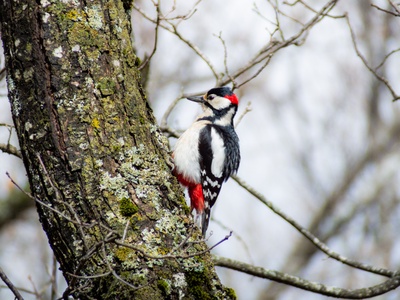
Great Spotted Woodpecker
A striking black and white bird with a bright red patch under its tail. Males also have a red patch on the back of the neck. Best known for its “drumming” – rapidly hammering its bill against a tree to mark territory.
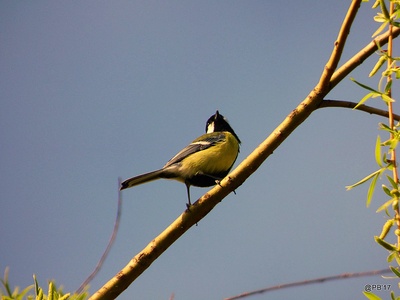
Great Tit
The largest of the UK’s tit family. It has a black head with large white cheeks, a yellow underside, and a bold black stripe down its centre. Has a huge variety of calls, with a loud, two-syllable “teacher-teacher” song being common.
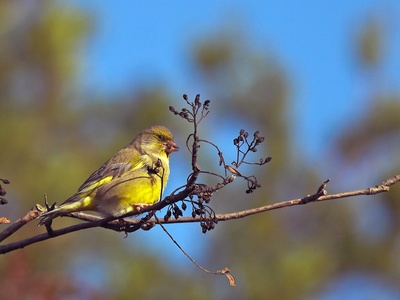
Greenfinch
A stocky, bull-necked finch with a powerful bill for cracking seeds. Males are olive-green with conspicuous yellow flashes on the wings and tail. Their song is a series of twittering notes, ending in a wheezing “dzweee”.
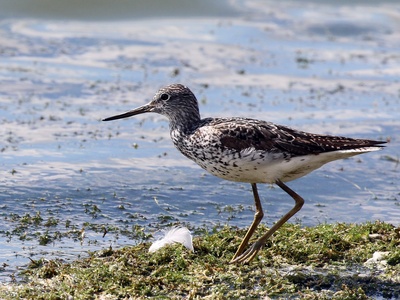
Greenshank
An elegant, medium-large wader with long greenish legs and a slightly upturned bill. Its plumage is grey and white. It is a wary and vocal bird, often the first to give its loud, ringing “tyu-tyu-tyu” alarm call.
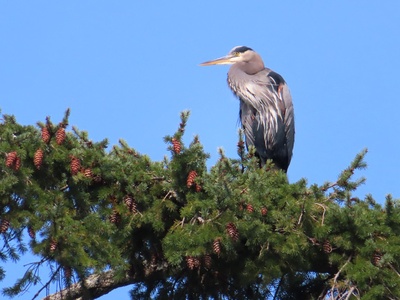
Grey Heron
A huge, long-legged bird that can stand over three feet tall. It has grey, black, and white plumage and a powerful dagger-like bill. Typically seen standing motionless at the water’s edge, waiting to strike at fish.
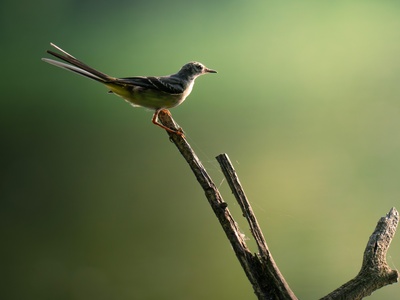
Grey Wagtail
A stunningly elegant bird, slimmer and with a much longer tail than the Pied Wagtail. It has a blue-grey back and vivid yellow underparts. As its name suggests, it constantly wags its long tail up and down as it walks.
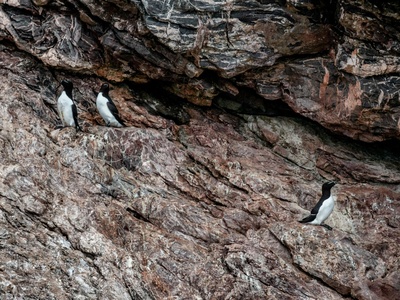
Guillemot
A medium-sized auk that looks like a “flying penguin”. It has dark chocolate-brown upperparts and a white belly. In summer, hundreds of thousands cram onto narrow cliff ledges to breed, creating an incredible sight and sound.
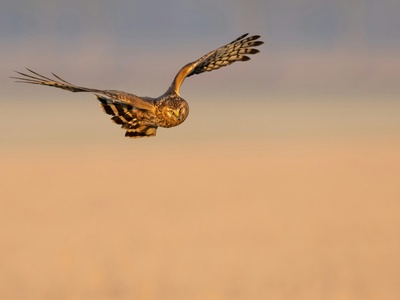
Hen Harrier
A graceful bird of prey that glides low over the ground while hunting. The male is a ghostly pale grey with black wingtips, while the female is larger, brown, and streaked, with a conspicuous white rump.
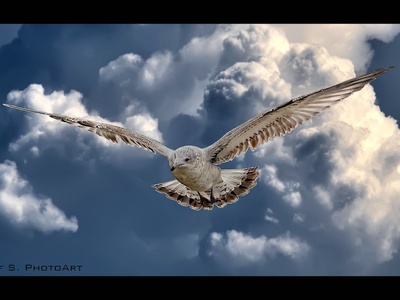
Herring Gull
A large, familiar gull with a light grey back, white body, and black-tipped wings. Adults have a powerful yellow bill with a red spot and pale eyes. An intelligent and adaptable scavenger, often seen in urban environments.
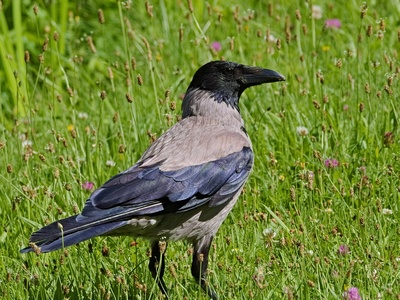
Hooded Crow
A striking crow with a black head, throat, and wings, but a contrasting pale grey body. It is intelligent and opportunistic. In Northern Ireland, this is our common crow, replacing the all-black Carrion Crow found in England.
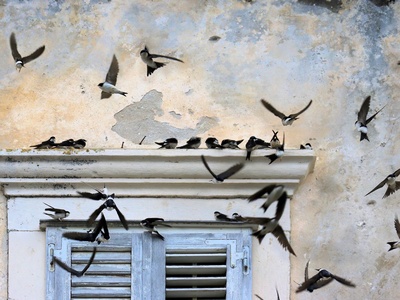
House Martin
A small, migratory hirundine with glossy blue-black upperparts and a pure white rump and underparts. It builds a distinctive enclosed mud cup nest under the eaves of houses. Often seen in fast-flying flocks, catching insects on the wing.
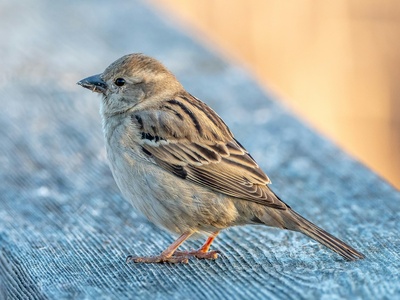
House Sparrow
A small, stocky, and noisy bird. The male has a grey crown, chestnut-brown nape, and a black bib. Females are a plainer, uniform dusty brown. A highly social species, often found in chirping groups in hedges or under cafe tables.
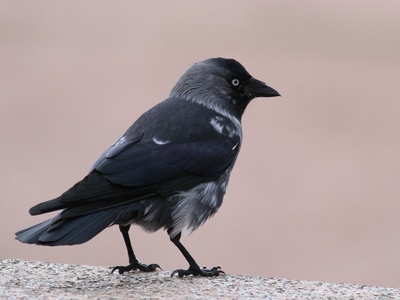
Jackdaw
The smallest of the common “black” crows, with a distinctive silvery-grey sheen on the back of its head and neck. Its most striking feature is its pale, piercing blue-grey eyes. A highly intelligent and sociable bird.
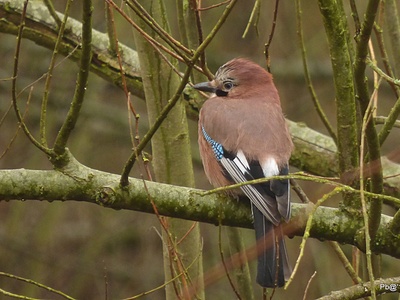
Jay
A colourful member of the crow family, though often shy and hard to see well. It is mostly pinkish-brown with a black moustache-like stripe, but has a flash of brilliant, electric blue on its wing. Famous for burying acorns for winter.
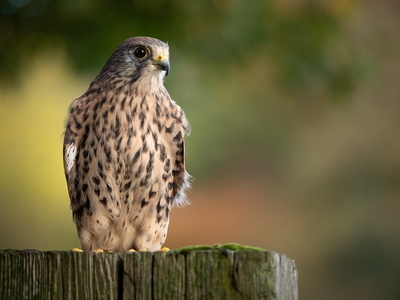
Kestrel
A small falcon famous for its ability to hover in one spot while hunting. It has a chestnut-brown back and a long tail. The male has a blue-grey head. Feeds on small mammals like voles, which it spots from its hovering vantage point.
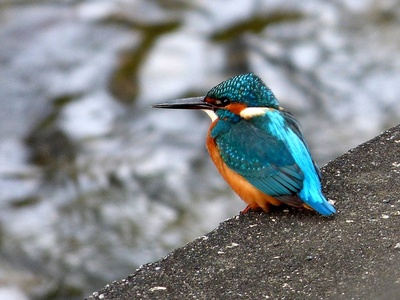
Kingfisher
A stunningly beautiful but shy bird. It is small, with a long dagger-like bill, bright blue back, and vivid orange underparts. Usually seen as a flash of electric blue as it flies low and fast over the water.
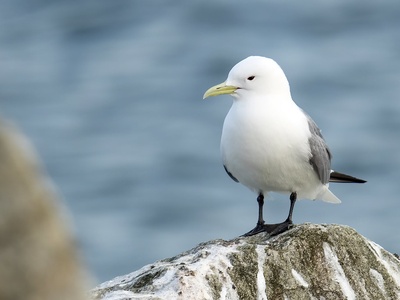
Kittiwake
A delicate, medium-sized gull with a small yellow bill, dark eyes, and solid black wingtips that look as if they’ve been “dipped in ink”. Its call sounds like its name: “kitti-waake”. Nests in noisy colonies on sheer cliff faces.
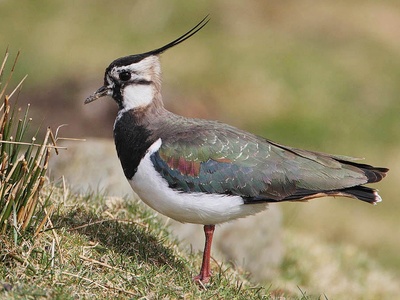
Lapwing
A striking black and white wader with an iridescent green-purple sheen on its back and a long, thin crest on its head. Famous for its tumbling, acrobatic display flight and its distinctive, wheezy “pee-wit” call.
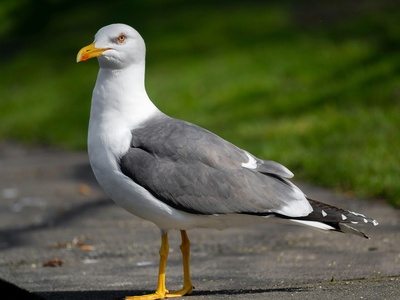
Lesser Black-backed Gull
Slightly smaller and more slender than a Herring Gull, with a darker grey to black back and wings. It has yellow legs, which is a key identification feature. Its numbers in NI increase significantly in summer with migrant arrivals.
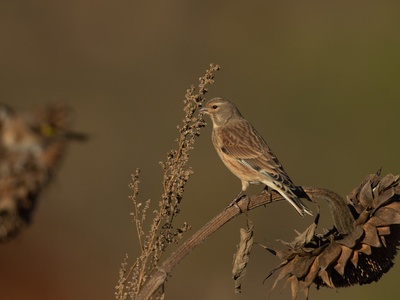
Linnet
A small, slim finch. In summer, the male has a beautiful crimson-pink forehead and breast, a grey head, and a brown back. They are social birds, forming flocks in winter, and have a pleasant, twittering song.
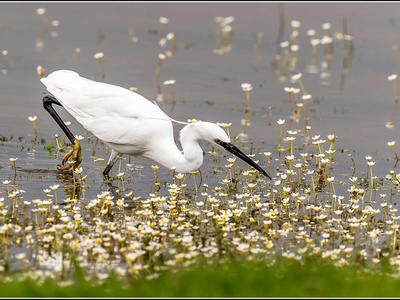
Little Egret
A small, elegant white heron with black legs and striking yellow feet. It was once a major rarity but has successfully colonised NI in recent decades. Often seen stalking small fish in shallow water.
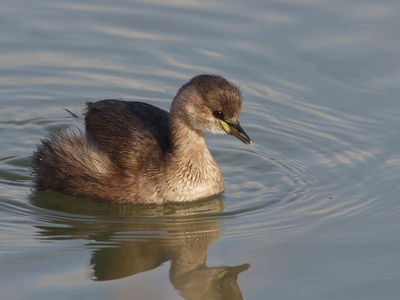
Little Grebe
A small, dumpy diving bird, also known as a Dabchick. In summer, it has a dark body, a chestnut throat, and a pale gape patch at the base of its bill. Lets out a distinctive, high-pitched, trilling call.
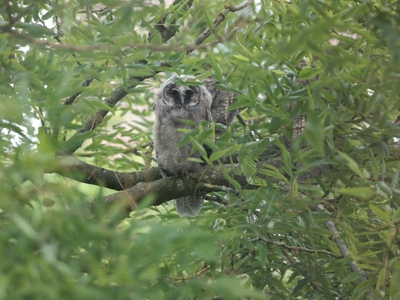
Long-eared Owl
A secretive, medium-sized owl. It is perfectly camouflaged with mottled brown and buff plumage, but is named for its long ear tufts which are raised when alarmed. It is strictly nocturnal and very difficult to see.
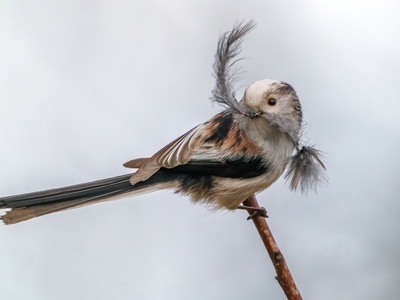
Long-tailed Tit
An unmistakable tiny bird with a long, narrow tail that is longer than its body. It has a pinkish, black, and white plumage and a round, “fluffy” appearance. Moves about in noisy, excitable family flocks.
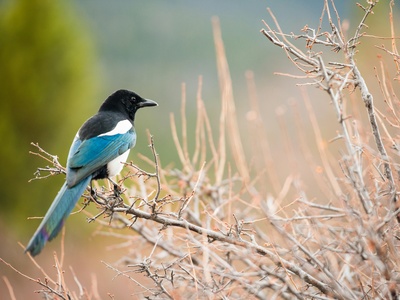
Magpie
A very familiar black and white member of the crow family with a very long tail. In good light, its black feathers show a beautiful iridescent blue and green sheen. Intelligent and resourceful, with a harsh, chattering rattle of a call.
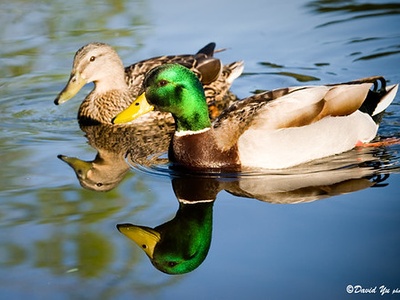
Mallard
The familiar “park duck”. The male (drake) has an iridescent green head, a yellow bill, and a curly black tail. The female is a mottled brown for camouflage. The ancestor of most domestic duck breeds.
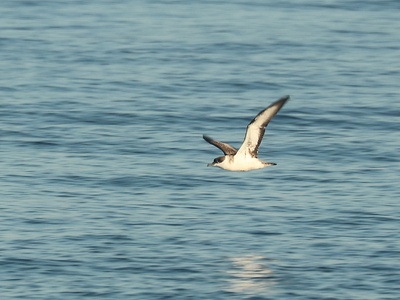
Manx Shearwater
A medium-sized seabird, black above and clean white below. It has a distinctive flight style, gliding low over the waves on stiff, straight wings, banking from side to side and “shearing” the water’s surface.
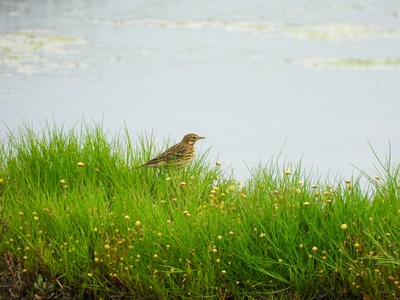
Meadow Pipit
A small, brown, streaky bird, often seen in open country. It has a thin bill and pinkish-brown legs. Its song is delivered during a parachute-like display flight, rising into the air before descending on stiff wings.
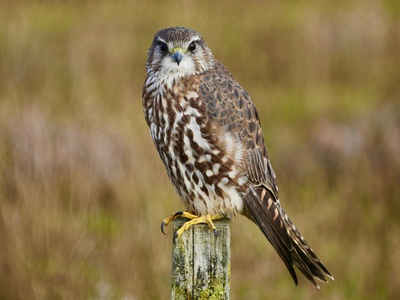
Merlin
The UK’s smallest falcon, about the size of a Mistle Thrush. It is compact and powerful, known for its fast, dashing flight low over the ground in pursuit of small birds. The male is blue-grey above, the female is brown.
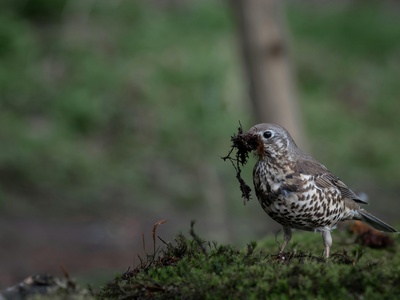
Mistle Thrush
Larger, greyer, and more upright than a Song Thrush, with rounder spots on its breast. Known for its loud, rattling call in flight, like a football rattle. Sings its wild, beautiful, and repetitive song from the highest treetops, even in winter.
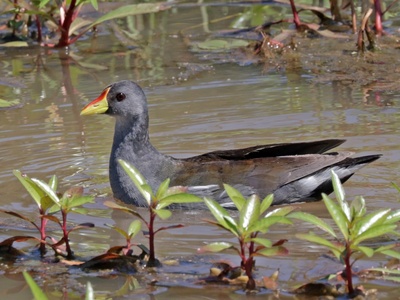
Moorhen
A common waterbird, smaller than a Coot. It is blackish with a red bill tipped with yellow, a red frontal shield, and a distinctive white line along its flanks. It nervously flicks its white undertail as it swims.
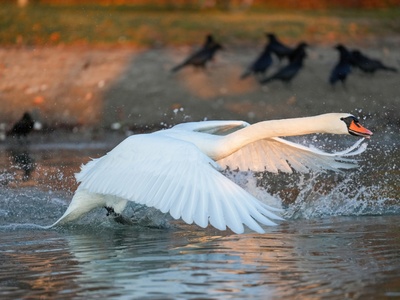
Mute Swan
The familiar large white swan of parks and lakes. Adults have an orange bill with a prominent black knob at the base. It flies with its neck outstretched and with powerful, slow wingbeats that make a characteristic throbbing sound.
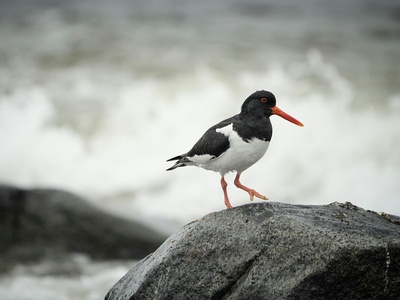
Oystercatcher
A large, noisy, black and white wader. It is unmistakable with its long, bright orange-red bill, and stout pink legs. Despite its name, it mainly eats mussels and cockles, not oysters. Has a loud, piping “kleep” call.
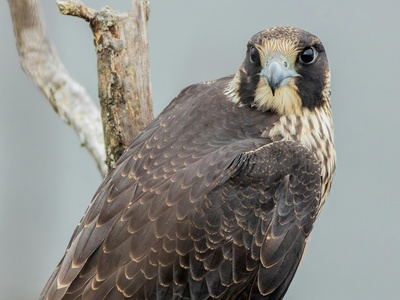
Peregrine Falcon
The fastest animal on the planet. A powerful, stocky falcon with a slate-grey back, barred white front, and a broad black “moustache”. Hunts birds by stooping on them from a great height at incredible speeds.
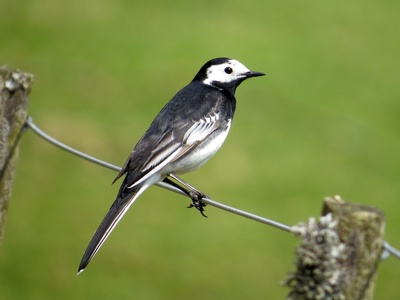
Pied Wagtail
A familiar and bold black and white bird, constantly wagging its long tail. Often seen in towns and cities, feeding on insects in open spaces. In winter, large numbers gather in noisy roosts in city centre trees for warmth.
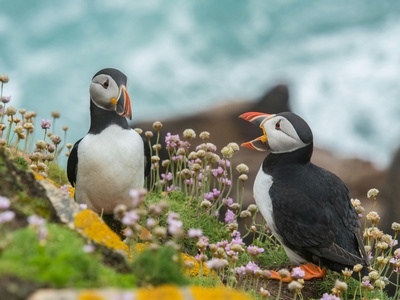
Puffin
An unmistakable, comical-looking seabird. It has a black back and white front, but is famed for its large, triangular bill that is brightly coloured in red, yellow, and blue during the breeding season. Spends winter far out at sea.
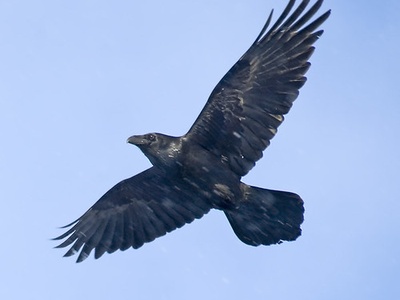
Raven
The largest member of the crow family, the size of a Buzzard. It is entirely black with a massive, powerful bill and a diamond-shaped tail in flight. Its call is a deep, resonant “kronk”. Often seen performing aerial acrobatics.
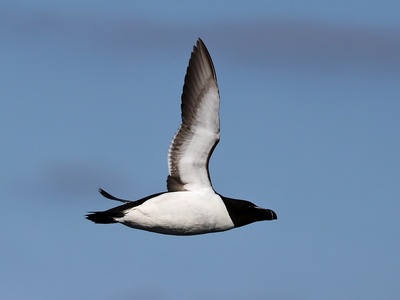
Razorbill
A medium-sized auk, black above and white below, similar to a Guillemot. It can be distinguished by its much thicker, deeper bill which has a thin white line across it. It is less numerous than the Guillemot on breeding cliffs.
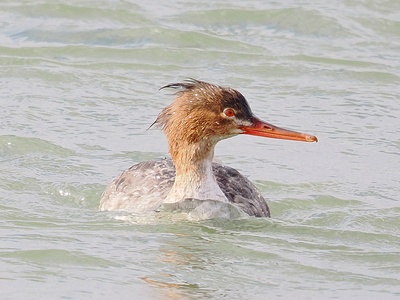
Red-breasted Merganser
A sleek diving duck, similar to a Goosander. The male has a glossy green head with a wispy, punk-like crest, a white neck collar, and a streaky reddish-brown breast. The female is grey-brown with a shaggy brown head.
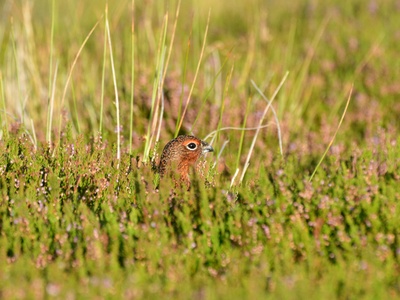
Red Grouse
A plump, chicken-like bird of the moors, with reddish-brown plumage and a bright red comb over the eye. It is famous for its explosive call that sounds like “go-back, go-back, go-back!”. Feeds almost exclusively on heather shoots.
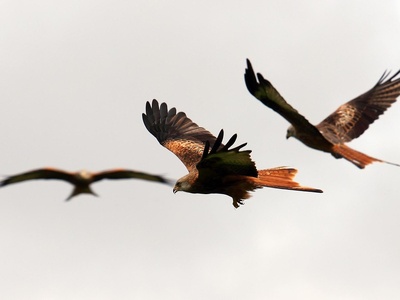
Red Kite
A large, graceful bird of prey, easily recognised by its long, deeply forked tail, which it constantly twists as it soars. It has a reddish-brown body, pale head, and distinctive white patches on the underside of its wings.
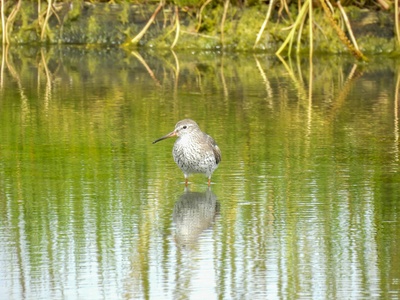
Redshank
A medium-sized wader with mottled brown upperparts. Its key features are its bright orange-red legs and the extensive white trailing edge to its wings, visible in flight. It is a noisy bird, with a loud, piping “tyuu-hu-hu” call.
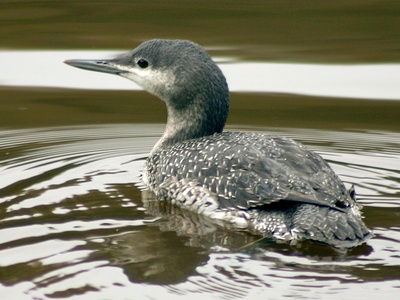
Red-throated Diver
The smallest of the divers. In winter, it is grey and white, but in summer develops a grey head and a distinctive triangular red throat patch. It has a slender, slightly upturned bill, which helps distinguish it from other divers.
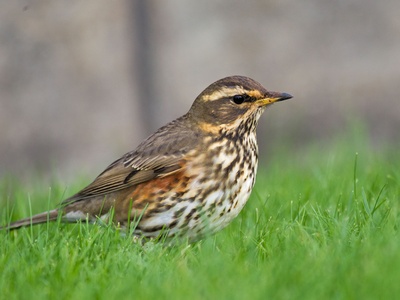
Redwing
A small thrush, similar in size to a Song Thrush. It has a prominent creamy-white stripe above its eye and gets its name from the rusty-red flanks and underwing, which are visible in flight. Arrives from Iceland and Scandinavia for the winter.
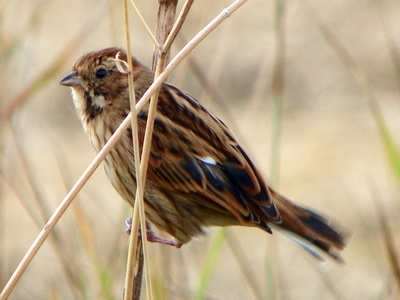
Reed Bunting
A sparrow-sized bunting. The male in summer is striking, with a black head and throat, a white collar, and a streaky brown body. The female is much plainer and browner. Has a simple, somewhat jerky, repetitive song.
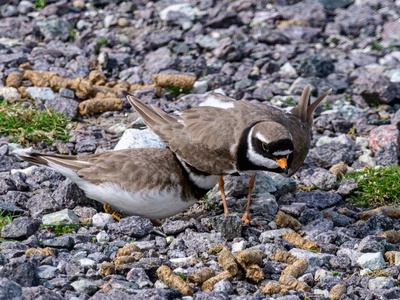
Ringed Plover
A small, stocky wader with a distinctive black and white head pattern and a black band across its white breast. It has a short orange bill with a black tip and orange legs. Runs in short bursts along the shoreline.
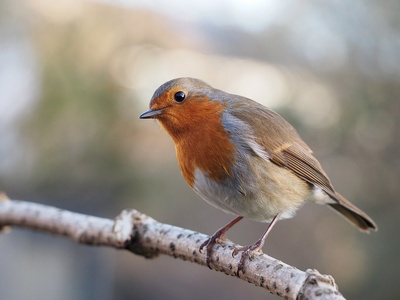
Robin
One of Northern Ireland’s most beloved and familiar birds. It is plump with brown upperparts and a famous bright orange-red face and breast. Known for its bold, confiding nature and its beautiful, melancholic song which is heard year-round.
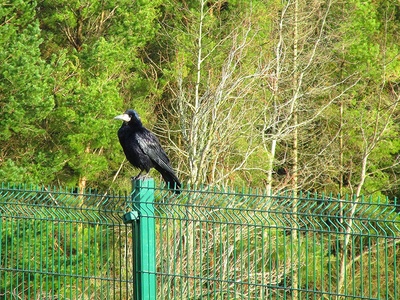
Rook
A large, all-black crow, but more slender than a Carrion Crow. Adults are distinguished by the bare, greyish-white skin at the base of their pointed bill. A highly social bird, always seen in groups and nesting colonially.
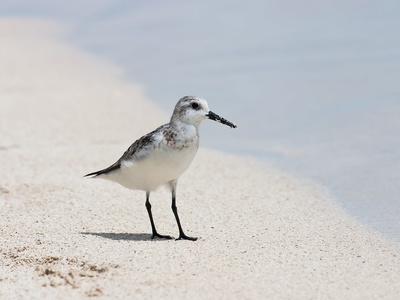
Sanderling
A small, plump wader famous for its clockwork-like feeding action, running back and forth at the edge of the waves. In winter, it is very pale grey and white, one of our palest waders. In flight, it shows a bold white wing-bar.
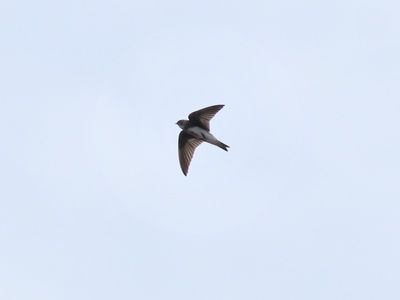
Sand Martin
The smallest European hirundine. It is brown above and white below, with a distinct brown band across its chest. They are social birds, breeding in colonies by excavating tunnels into vertical sandy faces.
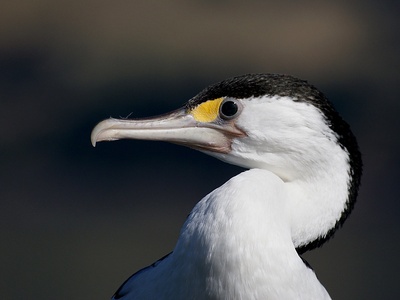
Shag
Similar to a Cormorant but smaller and more slender with a thinner bill. In breeding season, adults are all black with a glossy green sheen and a distinctively punk-like crest on their forehead. Exclusively a marine bird.
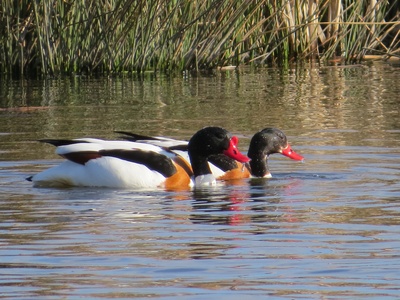
Shelduck
A large, striking, goose-like duck. It has a white body, a broad chestnut band across its chest, dark green head, and a bright red bill. Often seen in pairs or small groups walking about on mudflats at low tide.
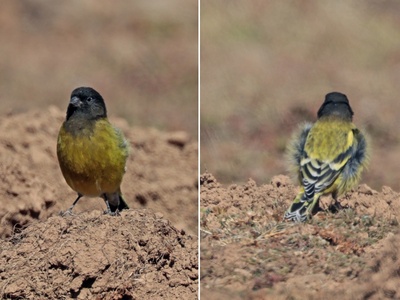
Siskin
A small, acrobatic finch. The male is streaky yellowish-green with a black cap and bib, and bright yellow patches on its wings and tail. Often hangs upside down to feed on alder cones or peanuts at a garden feeder.
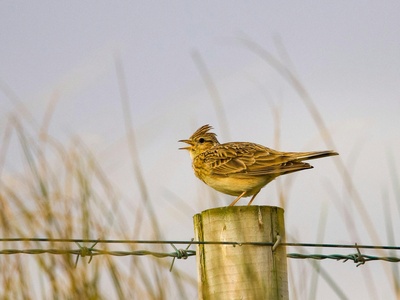
Skylark
A small, streaky brown bird, often difficult to see on the ground. It is famous for its incredible song-flight, where the male rises almost vertically into the sky, delivering a continuous, beautiful, twittering song for several minutes.
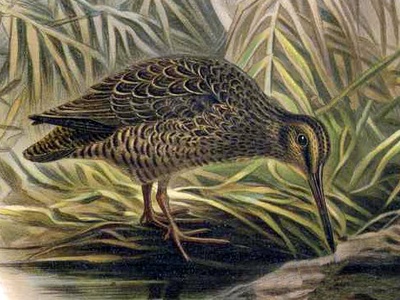
Snipe
A medium-sized wader with incredibly effective camouflage of mottled brown, black and buff stripes. It has a very long, straight bill and is most often seen when flushed, flying off in a fast, zigzag pattern.
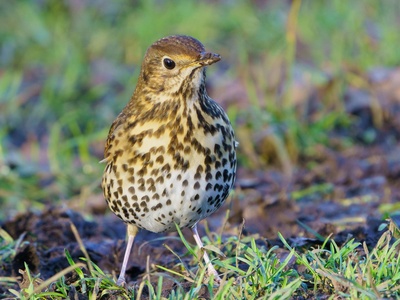
Song Thrush
A familiar brown-backed thrush with a pale breast covered in neat, arrow-head shaped spots. It is renowned for its beautiful, loud song, which consists of short, repeated musical phrases. Famously smashes snail shells on a favourite stone ‘anvil’.
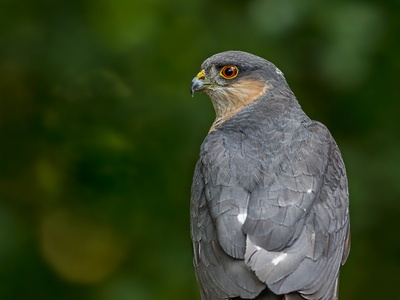
Sparrowhawk
A small bird of prey adapted for hunting other birds in confined spaces. The male is small with a blue-grey back, while the female is larger and brown. Has a characteristic “flap-flap-glide” flight pattern.
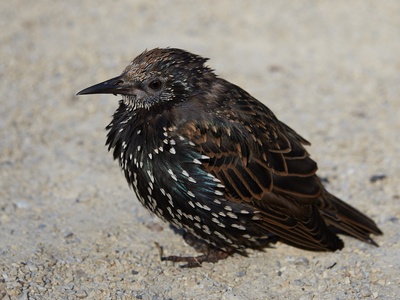
Starling
A noisy, gregarious bird. In summer, its glossy black plumage is iridescent with purple and green sheens. In winter, it is covered in pale spots. Famous for forming huge, swirling pre-roost flocks known as murmurations.
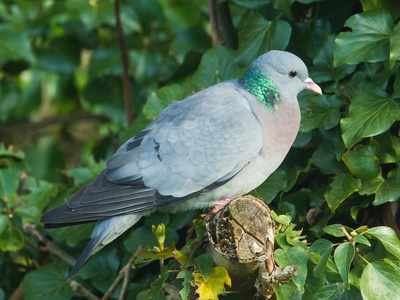
Stock Dove
Similar to a Feral Pigeon but slightly smaller and neater. It is a uniform blue-grey with an iridescent green patch on its neck, but lacks the white rump of the Feral Pigeon. It has dark eyes, which give it a gentle expression.
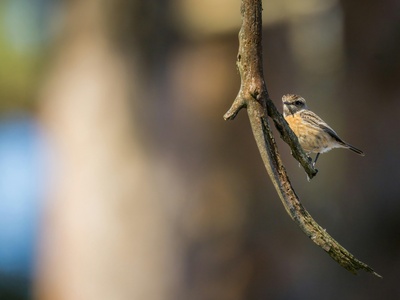
Stonechat
A small, robin-sized bird. The male is striking with a black head, white collar, and orange-red breast. Usually seen perched conspicuously on top of a gorse bush, flicking its wings and making a sharp call like two stones being tapped together.
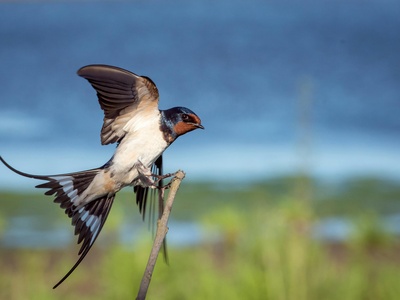
Swallow
The classic sign of summer. A sleek, fast-flying bird with glossy blue-black upperparts, a reddish-brown throat, and very long tail streamers. Often seen perched on telegraph wires or swooping low over fields to catch insects.
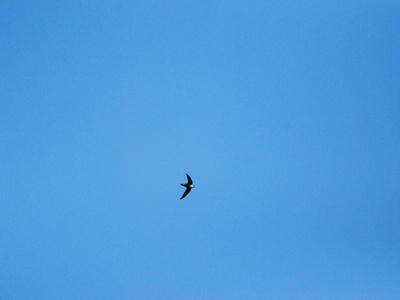
Swift
A dark, scythe-winged bird that spends almost its entire life in the air. Larger than a Swallow, with long, swept-back wings. Often seen in high-speed “screaming parties” flying around buildings at dusk on summer evenings.
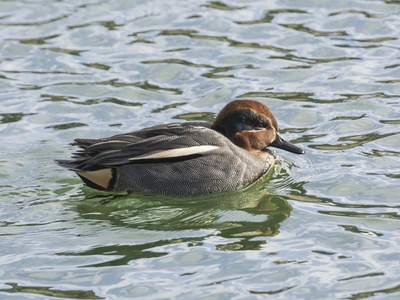
Teal
Our smallest duck. The male is intricately patterned grey with a chestnut head and a broad, iridescent green eye-patch. The female is mottled brown. They are fast, agile fliers, often taking off almost vertically from the water.
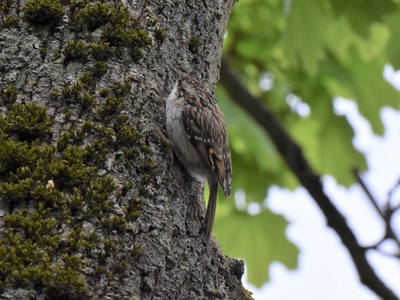
Treecreeper
A small, well-camouflaged bird with a mottled brown back, a white belly, and a slender, downcurved bill. It behaves like a mouse, starting at the bottom of a tree trunk and spiralling its way up in search of insects.
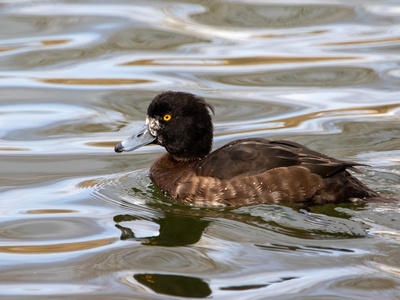
Tufted Duck
A medium-sized diving duck. The male is a striking black and white, with a piercing yellow eye and a distinctive tuft of feathers at the back of his head. The female is a chocolate brown with a smaller tuft.
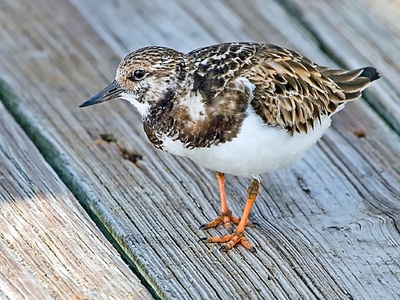
Turnstone
A stocky, short-legged wader with a unique feeding habit of flipping over stones and seaweed to find invertebrates. In winter it is dark brown and white, but in spring it develops a beautiful tortoiseshell or “calico” pattern on its back.
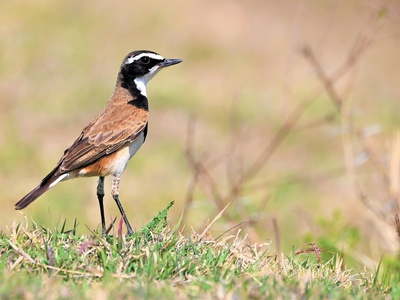
Wheatear
One of the first summer migrants to arrive. A smart thrush-sized bird, the male has a blue-grey back, black wings, a black eye-mask, and a peachy flush to his breast. All plumages show a conspicuous white rump in their bouncy flight.
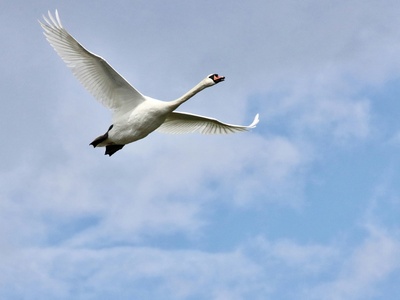
Whooper Swan
A large, migratory swan from Iceland. It is similar to the Mute Swan but holds its neck straight, not in an ‘S’ curve, and has a distinctive wedge-shaped yellow and black bill, with more yellow than black. It has a loud, clanging, bugle-like call.
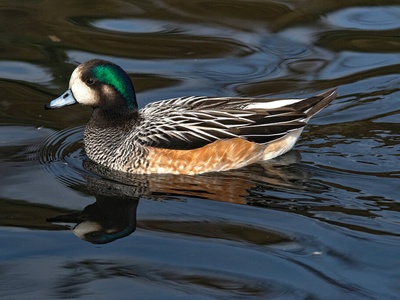
Wigeon
A medium-sized dabbling duck. The male is very handsome, with a grey body, pinkish breast, and a creamy-yellow forehead and crown. Often heard before it’s seen, thanks to its far-carrying, clear “whee-ooo” whistling call.
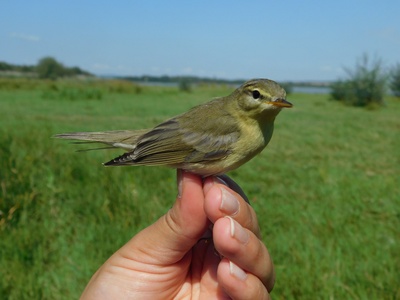
Willow Warbler
A small, delicate, olive-green and yellow warbler, very similar to a Chiffchaff. Best identified by its song: a beautiful, liquid, silvery cascade of notes that descends in pitch. Tends to have paler legs than a Chiffchaff.
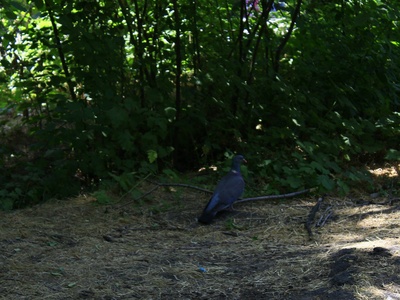
Woodpigeon
Our largest and most common pigeon. It is mostly grey with a pinkish breast and a distinctive white patch on the side of its neck. Its wings make a loud clattering sound on takeoff. Has a familiar, gentle, five-note “coo-COO-coo, coo-coo” song.
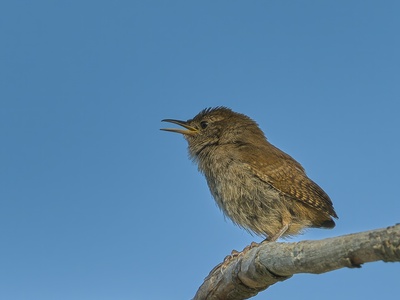
Wren
A tiny, dumpy, brown bird, often seen with its short tail cocked vertically. For its size, it has an astonishingly loud, powerful, and complex trilling song. It is a restless and energetic bird, constantly hunting for insects in the undergrowth.
